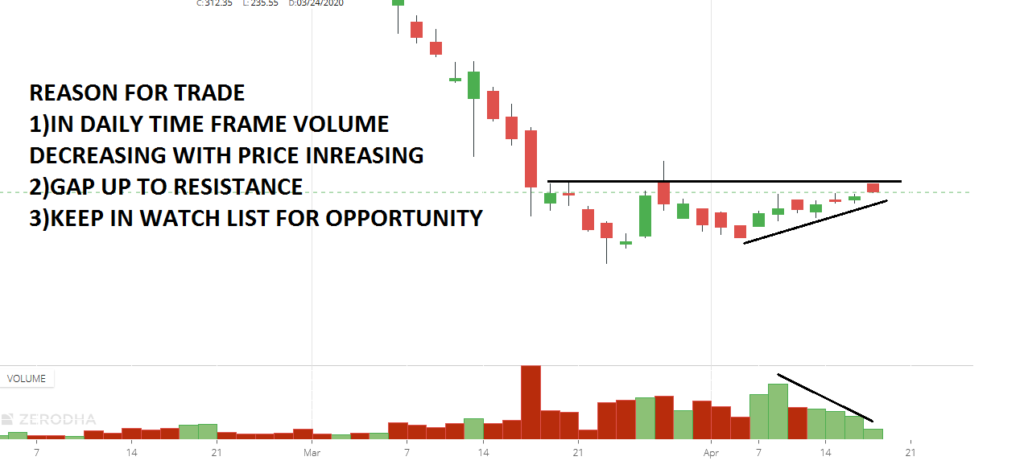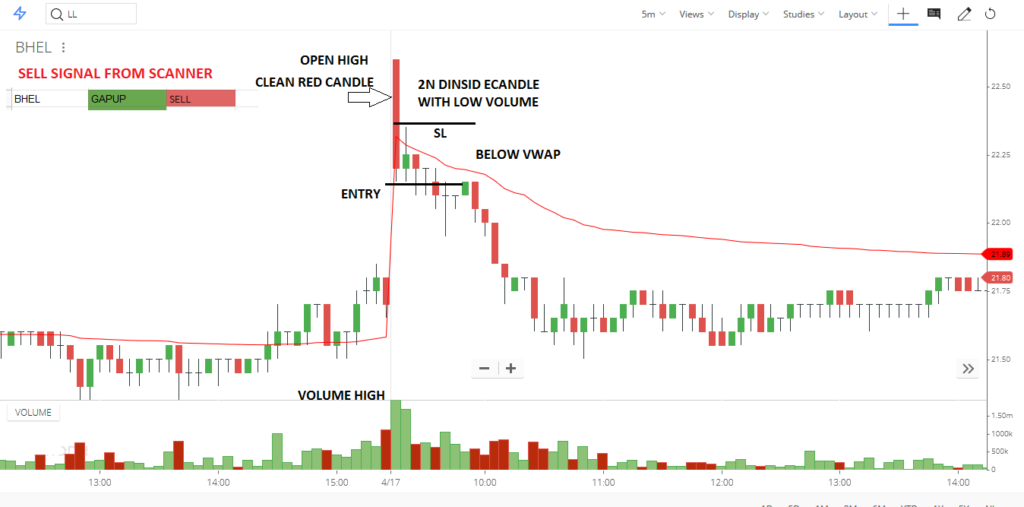n this article, I will discuss the Intraday Open High Open Low Trading Strategy in detail. Please read our previous article, in which we discussed the GAP Trading Strategy. As part of this article, we will discuss the following Open High Open Low Trading Strategy pointers in detail.
- The logic behind the Open High, Open Low Trading Strategy
- Where it occurs in the big picture
- Rules for trading OPEN HIGH LOW STRATEGY
- With live example
Intraday Open High Open Low Trading Strategy
The original name of the strategy is Open Drive. From a buy-sell perspective, we called it open high and open low.
Open high= sell
Open low= buy
So, open rive and open high open low are the same.
The logic behind the strategy
These are directional moves with strong hand participation and conviction.
Where does it occur? Location
- It occurs most of the time after a sideways price action (tight price channel), or
- You can also spot it at the start of a trading session.
- From a strong supply or demand zone
Suppose an open drive occurs after a sideways price action. In that case, it indicates that either strong buyers or sellers were accumulating their positions in the sideways price action, or afterward, they started aggressive buying or selling activity to move the price.
At the start of a trading session, an open drive is generally caused by participants who have made their market decisions before the opening bell. The market opens and moves aggressively in one direction. Fueled by strong smart money activity, the price never returns to trade back through the opening range.
The rule for selling open drive or open high strategy
- Where is the action playing out? (location in the big picture). Reason to take the trade. It best works if a breakout from any sideways price action is a gap from a strong supply or demand zone
- First, 5 min candle(opening candle) should be a big red candle
- Open = High. For easy reference, a 2-3 points buffer will be considered equal, not carrying much weight
- The first candle opens to close around the lower of the candle (preferably)
- Volume must be high
- Minimum Risk: Reward(R: R)=1:2(next support area)
- Breakout entry after opening range or first candle low(for open high set up)
- The price must be below VWAP for the sell
Let’s do it as an example
Open high strategy for entry
- Wait for the first candle to complete. It should be a big red candle
- Volume should be high.
- The 2nd inside candle should be a Doji or narrow candle
- low of second candle equal to low of 1st candle
- Declining or lower volume on 2nd candle
- 2nd candle range stays within the bottom 2/3rd of 1st candle
- The price must be below VWAP
- Stop loss above your entry candle or day high as per your risk

Let’s do an example
Today, I took this trade
On a daily time frame, the price increases with volume decreasing and closing near resistance. I clearly indicate that this move will not break the resistance.

Today, the price gap is up to resistance. Then, wait for 1st candle to complete
What did the first candle tell me?
- A big red candle
- Open = High
- The first candle opens and closes around the lower of the candle
- Volume very high
All these indicate bearishness. So sold in next candle. As shown in the image below




You can find open low or open high in our scanner

The OHOL strategy is quite straightforward but should be employed with a thorough understanding of market behavior and individual stock characteristics. It is also essential to consider news and other events affecting stock prices. As with any trading strategy, there is no guarantee of profit, and it is critical to practice sound risk management at all times.

